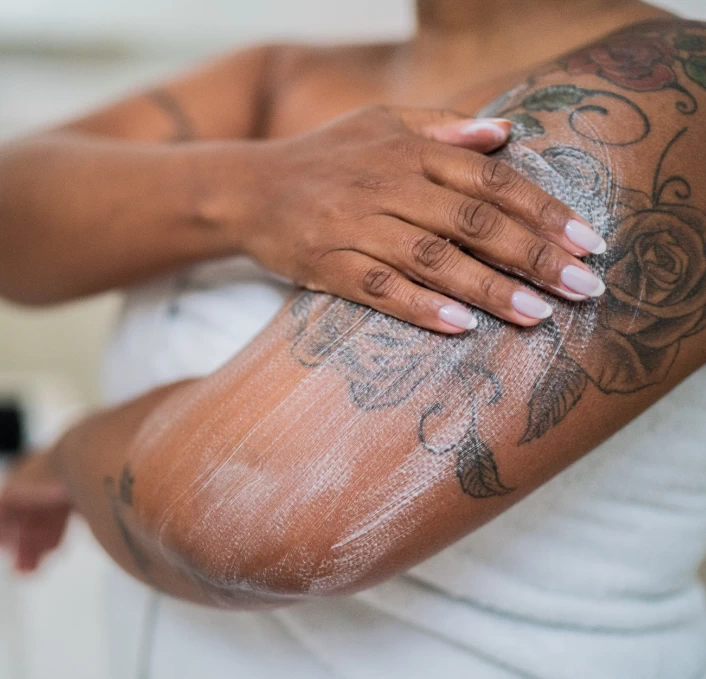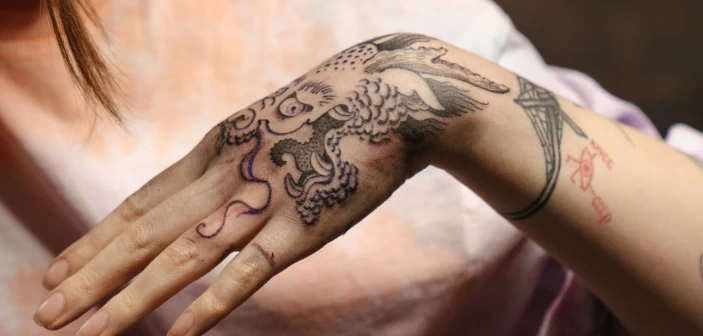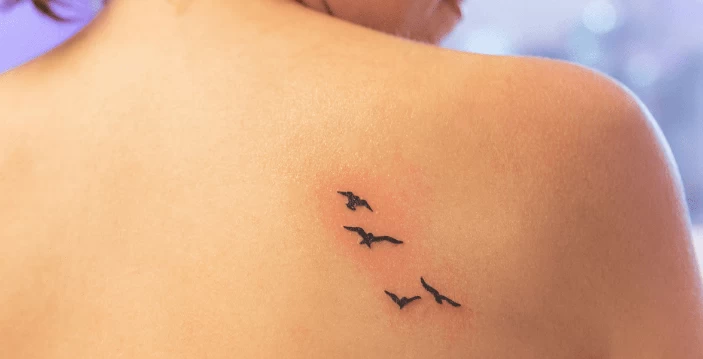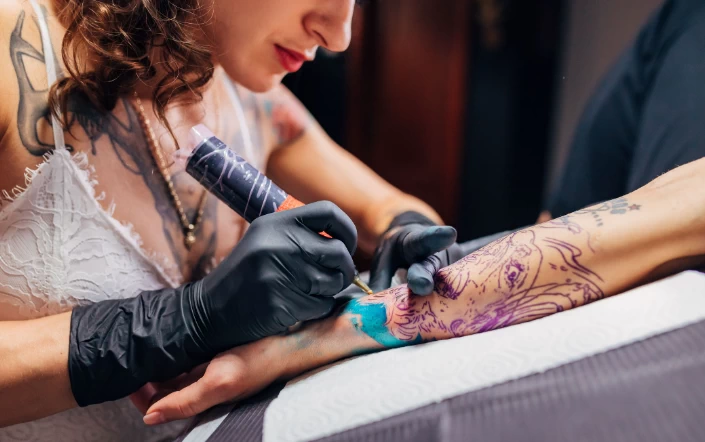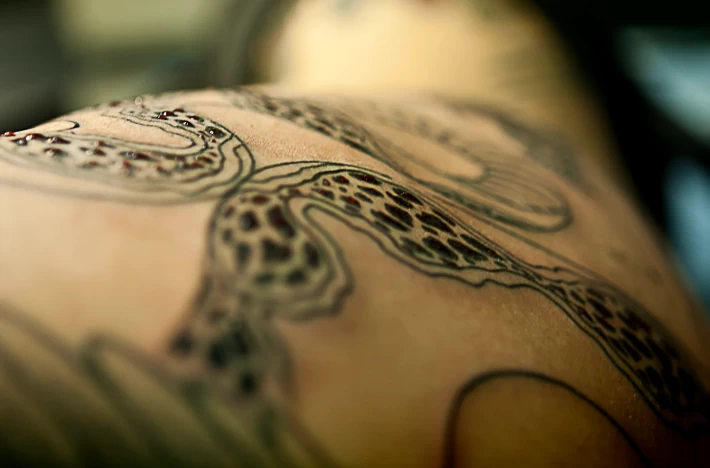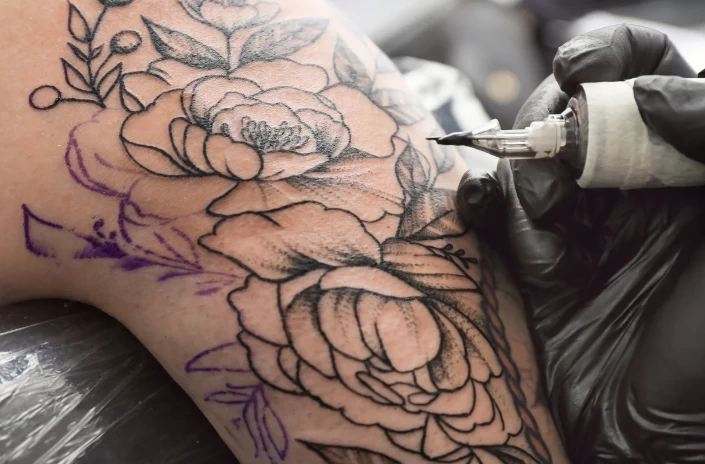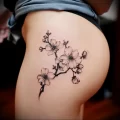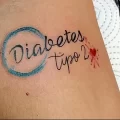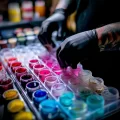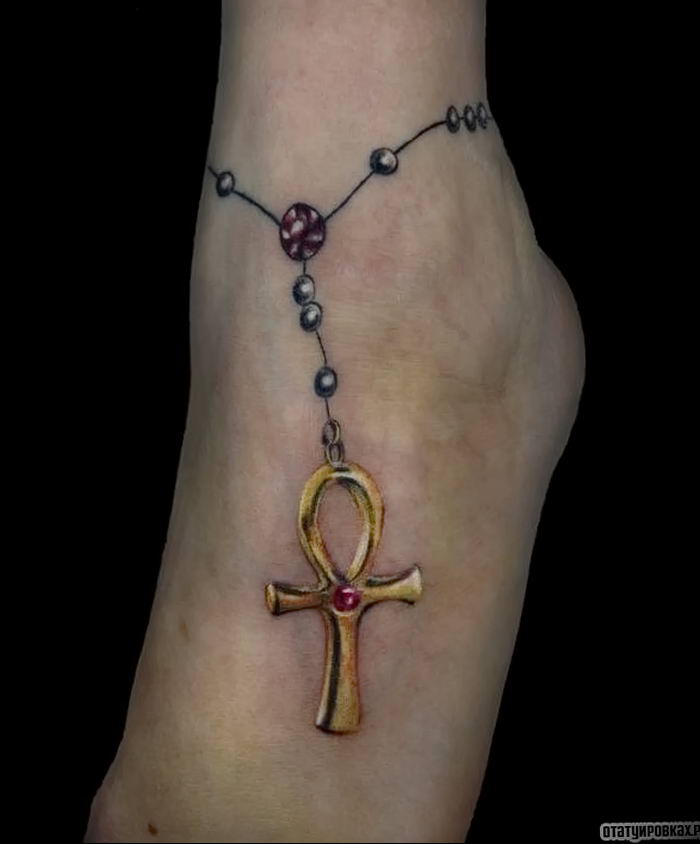In today’s world, tattoos have long ceased to be an exclusive attribute of sailors or subcultures. Today, it is a popular form of self-expression, art, and even a way to preserve significant events or people in memory. Despite its widespread popularity and accessibility, the tattooing process remains an invasive intervention in the skin, implying certain risks. One of such risks is tattoo inflammation, which can become a serious problem if not addressed in time. Tattoo inflammation can arise for various reasons, including an allergic reaction to the ink, infection due to improper aftercare, or even the use of non-sterile equipment. This makes the choice of a professional and responsible artist, as well as a salon with an impeccable reputation and high hygiene standards, extremely important. Understanding how to care for a tattoo after application can significantly reduce the risk of inflammation and other undesirable reactions. However, even with all precautions, no one is immune to potential complications. Therefore, knowing how to recognize the signs of inflammation and what to do in such a situation is essential for anyone who decides to decorate their body with a tattoo. In this article, we will thoroughly examine the causes of tattoo inflammation, teach how to recognize the first symptoms, and suggest effective steps for caring for inflamed skin. Our goal is to provide comprehensive information that will help you avoid potential problems and maintain the beauty and health of your tattoo for many years.
CAUSES OF TATTOO INFLAMMATION
Tattoo inflammation is a phenomenon that many who decide to decorate their body with this form of art may encounter. The tattoo healing process is complex and multi-step, and problems contributing to the development of inflammation can arise at each stage. Let’s consider the main reasons that can lead to this undesirable effect. Allergic Reaction to Ink One of the most common causes of inflammation is an allergic reaction to the inks. Some people may be sensitive to certain components of the inks, manifesting as redness, itching, swelling, or even rashes at the tattoo site. It is important to conduct an allergy test before getting a tattoo, especially if you have a predisposition to allergic reactions. Infection Infection is another serious cause of inflammation. It can occur due to the use of non-sterile equipment, improper aftercare of the tattoo, or contact with contaminated water. Symptoms of infection include, but are not limited to, redness, swelling, pain, an increase in temperature in the tattoo area, and pus discharge. Improper Care Even with the use of sterile equipment and no allergy to the inks, improper aftercare can provoke inflammation. Over-moisturizing, excessive use of ointments, inadequate hygiene, peeling off the scab, and injuring the tattoo during the healing period can negatively affect the healing process. The Importance of Choosing a Professional Salon and Experienced Artist Choosing an experienced artist and a professional salon with high hygiene standards is critically important to prevent inflammation and other tattoo problems. Professionals not only use sterile equipment and quality inks but will also provide you with all the necessary aftercare recommendations to minimize the risk of inflammation. Understanding the causes of tattoo inflammation plays a key role in their prevention. From choosing the right salon and artist to following aftercare recommendations – every step is important for ensuring the safety and health of your skin. In the next section, we will take a closer look at how to recognize the signs of inflammation and what to do if you encounter this problem.
HOW TO RECOGNIZE INFLAMMATION
Identifying the signs of tattoo inflammation at an early stage can significantly ease treatment and prevent possible complications. Inflammation can manifest differently, depending on its cause, but there are several common symptoms to be aware of after getting a tattoo. Redness Mild redness around the new tattoo for the first few days is normal, however, if the redness does not decrease, spreads further across the skin, or becomes more intense, this may indicate inflammation. Swelling Slight swelling in the area of the tattoo immediately after its application is common. Nonetheless, if the swelling increases and is accompanied by pain, this may be a sign of infection. Pain Pain should gradually decrease after getting a tattoo. If it intensifies, becomes throbbing, or does not subside within a few days, this is an alarming signal. Pus Discharge Any discharge, especially if it is white, yellow, or green and has an unpleasant smell, is a clear sign of infection. Normal healing should not be accompanied by pus discharge. Increased Skin Temperature Increased temperature in the tattoo area, especially in combination with other symptoms, also indicates inflammation. Itching and Peeling While itching and mild peeling are part of the normal healing process, excessive itching accompanied by redness and swelling may be a sign of an allergic reaction or infection. Distinguishing between normal healing and signs of inflammation is critically important for timely medical attention. Normal healing includes mild redness, swelling, itching, and peeling in the first days after getting a tattoo, but these symptoms gradually decrease and are not accompanied by a deterioration in overall condition. If you notice any of the aforementioned signs of inflammation, it is important to take immediate action and, if necessary, seek medical attention. In the next section, we will discuss the actions to be taken at the first signs of tattoo inflammation.
FIRST AID FOR TATTOO INFLAMMATION
If you suspect that your tattoo has become inflamed, it’s crucial to act immediately to minimize the risk of further complications. Here are some first aid steps to help manage the initial symptoms of inflammation.
Step 1: Assess the Situation Carefully examine the tattoo for signs of infection or allergy, such as excessive redness, swelling, pus discharge, or increased pain. If the symptoms are mild and not accompanied by a high fever or general deterioration of well-being, you can try to alleviate them at home.
Step 2: Maintain Cleanliness Gently wash the inflamed area with warm water and antibacterial soap. Avoid using harsh scrubs or sponges that could injure the skin. After washing, pat the skin dry with a clean towel, avoiding rubbing.
Step 3: Apply Antiseptic Apply an antiseptic solution or ointment designed for tattoo care to prevent infection development. Follow the manufacturer’s instructions and avoid products with high alcohol content that could dry out the skin.
Step 4: Use Cold Compresses To reduce swelling and alleviate pain, you can apply cold compresses. Wrap ice or a chilled gel pack in a clean cloth and apply it to the inflamed area for short periods (10-15 minutes) with breaks in between.
Step 5: Ensure Rest Avoid wearing tight clothing that could rub against the inflamed tattoo, and minimize physical activity to prevent further irritation.
Step 6: Monitor the Condition Closely monitor any changes in the condition of the tattoo and surrounding skin. If symptoms do not improve within a few days or worsen, seek medical help immediately.
It’s important to remember that these measures are only a temporary solution. If there are clear signs of infection or if the inflammation causes serious concern, consult a doctor. In the next section, we’ll discuss when and why it’s crucial to seek professional medical help immediately.
WHEN TO SEE A DOCTOR
Proper care of a tattoo during its healing period is key to preventing many issues, including inflammation. However, even when following all recommendations, situations may arise when medical assistance is needed. It’s important to distinguish between normal healing symptoms and signs that require a specialist’s consultation.
Symptoms requiring a doctor’s visit:
- Prolonged redness and swelling: If redness and swelling do not decrease a few days after the tattoo application or even worsen, this may indicate an infection.
- Pus discharge: Any discharge from the tattoo, especially if accompanied by an unpleasant smell, requires medical intervention.
- Increased pain: Pain that does not subside or worsens over time may indicate the development of an infectious process.
- Body temperature increase: Fever or a rise in body temperature can be signs of a serious infection requiring immediate treatment.
- Spread of redness: If redness begins to spread beyond the tattoo area, this may indicate the spread of infection.
- Allergic reaction: Symptoms of allergy, such as rash, itching, facial swelling, or difficulty breathing, require immediate medical attention.
Medical Procedures and Treatment Upon visiting a doctor, an evaluation of the tattoo’s condition may be conducted, and antibiotics for infection treatment or antihistamines for allergic reactions may be prescribed. In some cases, lab testing of discharges may be necessary to determine the type of pathogen and select adequate therapy.
It’s crucial to remember that timely medical help at the first signs of inflammation or infection can prevent the development of serious complications and contribute to safe and quick tattoo healing. Do not ignore symptoms requiring a specialist’s attention, and it’s always better to err on the side of caution by seeking professional advice.
In the next section, we will discuss inflammation prevention methods and basic tattoo care rules that can help avoid many problems and ensure its beauty and health for many years.
INFLAMMATION PREVENTION
Proper care and prevention are key to avoiding tattoo inflammation. In this section, we will thoroughly examine what measures can and should be taken to minimize the risk of undesirable reactions and ensure a healthy and quick healing process.
Choosing a Salon and Artist
- Licensing and reputation: Before choosing a salon and artist, ensure they have all necessary licenses and positive reviews from previous clients. Professionalism and experience significantly reduce the risk of issues.
- Hygiene and sterility: Ensure the artist uses disposable needles and gloves, and all tools are sterilized. A clean and well-maintained workspace is also a good indicator of high hygiene standards.
Aftercare
- Follow the artist’s instructions: After getting a tattoo, the artist will provide you with aftercare instructions. Strictly following these recommendations can help avoid many problems.
- Use antiseptics: Regular application of antiseptic agents in the first days after tattooing can help prevent infection.
- Avoid water contact: Try not to wet the tattoo in the first days of healing and avoid prolonged immersion in water until fully healed.
- Sun protection: Ultraviolet can negatively affect a healing tattoo, so avoid direct sunlight and use sunscreen after healing.
Hygiene Maintenance
- Hand cleanliness: Always wash your hands before touching the tattoo during care.
- Clothing: Wear clean, soft, and loose clothing to avoid irritation and rubbing of the tattoo.
The Importance of Maintaining Hygiene and Using Antiseptics Maintaining hygiene and regularly using antiseptics play a critically important role in preventing infections and inflammation. These simple measures can help speed up the healing process and maintain the beauty of your tattoo.
Preventing tattoo inflammation starts even before visiting the salon and continues throughout the entire healing period. A responsible approach to choosing an artist and salon, as well as strictly following all aftercare recommendations, can help avoid many issues and ensure the longevity and health of your tattoo. In the following section, we will discuss how to care for a tattoo after inflammation to ensure its beauty and safety.
RECOVERY AND CARE AFTER INFLAMMATION
After resolving the inflammation, it’s crucial to ensure proper care for the tattoo to promote quick skin recovery and prevent any recurrence of issues. This process requires patience and attention to detail, including the use of specialized healing products and adherence to professional recommendations.
Key aspects of post-inflammation care:
- Gentle care: After the inflammation subsides, the skin remains sensitive and vulnerable. Use gentle, natural cleansing and moisturizing products, avoiding aggressive cosmetics and those with fragrances or alcohol.
- Continued use of antiseptics: Even after the skin condition improves, it’s recommended to continue applying antiseptic solutions or ointments designed for tattoo care until complete healing, to prevent re-infection.
- Sun protection: Recovered skin is particularly sensitive to ultraviolet radiation. Use high SPF sun protection to shield the tattoo from fading and maintain its vibrancy.
- Avoid mechanical damage: Refrain from active sports, steam baths, saunas, and prolonged bathing in water until full healing, to avoid injuring sensitive skin.
- Consultation with a specialist: At the slightest sign of malaise or return of inflammation symptoms, immediately consult a doctor or dermatologist for a follow-up.
The importance of monitoring the condition of the skin and tattoo After inflammation, it’s extremely important to carefully monitor the healing process of the tattoo. Regularly check the area for color changes, shape, or the appearance of unusual symptoms, such as redness or swelling. This will help identify potential issues in time and prevent their development.
Taking care of a tattoo after inflammation requires special attention and precision. Following all care recommendations not only speeds up the recovery process but also maintains the beauty and brightness of your tattoo for many years. Remember, the health of your skin directly affects the quality and appearance of the tattoo, so do not neglect professional advice and take the recovery process seriously.
APPENDIX/ADDITION
Frequently Asked Questions (FAQ) about tattoo problems and their solutions Question 1: What should I do if my tattoo starts itching? Answer: Mild itching is a normal part of the healing process. It’s important not to scratch the tattoo. To alleviate itching, you can use a special moisturizing cream or aloe vera gel. If the itch is accompanied by redness, swelling, or discharge, consult a doctor. Question 2: How often should I apply ointment to the tattoo during the healing period? Answer: Typically, it’s recommended to apply a thin layer of specialized ointment or cream 2-3 times a day. It’s important to allow the skin to breathe, so don’t overuse the product. Question 3: Can I tan with a new tattoo? Answer: Avoid direct sunlight and tanning beds for the first 3-4 weeks after getting a tattoo. Once fully healed, use sunscreen with high SPF to protect the tattoo from fading. Question 4: Why does my tattoo look faded after healing? Answer: In some cases, scabs may form during healing, temporarily obscuring the brightness of the colors. After complete healing and scab shedding, the color should become more vivid. If the tattoo remains faded, consult your tattoo artist for advice. List of recommended products for tattoo care and preventing inflammation
- Antiseptic agents:
- Chlorhexidine (for skin treatment in the first days after tattoo application).
- Miramistin (has a broad spectrum of antimicrobial action).
- Moisturizing and healing creams:
- Bepanthen or similar (promotes quick healing and moisturization of the skin).
- Cream with panthenol (soothes the skin and accelerates the regeneration process).
- Sun protection products:
- Sunscreen with SPF 50+ (to protect the tattoo from ultraviolet radiation after healing).
- Products for gentle washing:
- Hypoallergenic soap-free cleansing agents (for daily care without irritating the skin).
This list of products is indicative, and the choice of a specific product should be made considering individual skin characteristics and tattoo artist recommendations.
CONCLUSION
The completion of the recovery process after tattoo inflammation is not only a moment of relief but also an important stage that requires continued responsible care and attention to the condition of your skin. Our journey through the world of tattoos is filled not only with the excitement of new body images but also with the importance of understanding how to care for your health and the beauty of tattoos. At tattoovalue.net, we will continue to cover current topics related to the art of tattooing, providing detailed and verified information on how to avoid potential problems and how to act in case they occur. We believe that sharing knowledge and experience will help our community become more informed and caring about their health and the beauty of tattoos. We encourage you to share your stories, tips, and questions in the comments under the articles.
